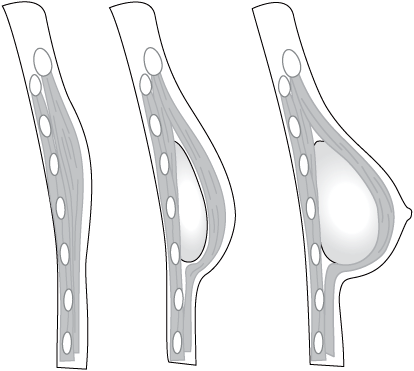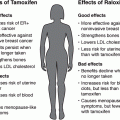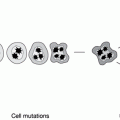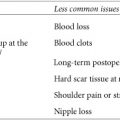Chapter 11
Reconstruction
New Breasts after Mastectomy
RECONSTRUCTION AFTER MASTECTOMY replaces the volume and shape of your breasts. In the hands of a gifted plastic surgeon, reconstruction isn’t just an operation, it’s art. Surgical techniques have greatly improved in the last decade, particularly benefiting women who have PBM with immediate reconstruction. The goal is no longer to simply restore your profile in clothes, but to make you look as natural as possible with or without clothes.
Traditional reconstruction procedures involve two or more operations over several months. The initial surgery forms breast mounds without nipples, replacing tissue removed during mastectomy with implants or flaps (sections of tissue from your back, abdomen, thigh, or buttocks). This first stage is the most complex and involves the most recovery. Depending on the procedure, a shorter revision surgery then refines the shape and size of your new breasts and adds nipples. Finally, optional tattooing adds color to the nipple and areola.
Some women prefer not to have reconstruction. Those who do have several options, each with advantages and disadvantages. If you’re considering reconstruction, it’s important to learn about your choices; decide which, if any, is best for you; and select a surgeon who is experienced and skilled in that procedure (see table 10, page 131).
Delaying Reconstruction to Complete Breast Cancer Treatment
Although most women can have immediate reconstruction, your oncologist may recommend a delay of six months to a year to avoid the possibility of infection or healing issues before you complete chemotherapy or radiation. A temporary implant called an expander can be placed during your mastectomy and slowly inflated during your chemo treatments. In six to twelve weeks after your last treatment, when your immune system is fully recovered, your expanders can then be replaced with implants and your new nipples created. Or you can wait and have delayed reconstruction once you’ve completed treatment. Tissue flaps are major surgery; if that is your preferred method of reconstruction, you may have to wait until you’ve completed chemotherapy.
Reconstruction after radiation is more difficult, because the skin and blood supply are damaged by the treatment. Implant reconstruction after radiation has a particularly high potential for complications or loss of the implant. Sometimes the remaining breast skin is too thin and fragile for the implant process, and extrusion (the implant breaks through the skin) can occur. It sometimes works, especially if the skin is expanded very slowly. If it’s damaged extensively and doesn’t expand or the implant fails, a tissue flap is the only remaining reconstructive option. If you have your heart set on implant reconstruction, some surgeons will place an expander during mastectomy, quickly complete expansion, and exchange it for an implant before radiation.
Alternatively, saline can be removed from an expander before radiation, then refilled after the last treatment. If you need radiation after mastectomy, tissue flap reconstruction usually produces better results. Flap reconstruction may also be difficult after radiation, because the blood supply to the new breast is compromised. The risk of necrosis is higher, but in most cases, it isn’t a serious problem.
Living with a Flat Chest
If you choose not to reconstruct your breasts, as many women do, your chest will be flat after mastectomy. You might be just fine with this, especially if you’ve always had very small breasts or don’t want to have additional surgery. If you decide against reconstruction but want to fill out your clothes, you can use prostheses, breast forms made of cotton, foam, latex, or silicone that stick to your chest or fit into a pocket in your bra. Wearing a prosthesis can also help to provide balance when trying to fit into clothes after unilateral mastectomy, or between mastectomy and delayed reconstruction.
Prostheses come in a variety of shapes, weights, and prices. Silicone is the most expensive because it has a consistency that is most like a natural breast. It’s important to have a qualified fitter in a mastectomy boutique or department store help to fit you correctly. Visit tlcdirect.org, a website maintained by the American Cancer Society, for more information about breast prostheses.
MY STORY: My Breasts Don’t Define Me
I chose no reconstruction for a simple reason: I wanted to be done with surgery. Part of me will always miss my breasts, but they don’t define me, and reconstruction would not have given them back. One breast was removed due to invasive ductal breast cancer, and I chose the fastest surgery—reconstruction would have meant waiting for the plastic surgeon’s schedule and a longer recovery. The other breast was removed a year later, along with my ovaries, after I learned I was BRCA1 positive and diagnosed with leukemia. I then opted for no recon because I didn’t want to risk infection, reconstruction failure, or additional surgeries. For me, coming to terms with my new reality meant accepting that my own breasts were gone. I knew if I ever changed my mind, reconstruction would still be an option. Six years later, I haven’t changed my mind. I am undeniably different, but I’m still me. I have no regrets about foregoing reconstruction. My choice may not have been right for everyone. It was simply the right one for me.
—LISA
Saline and Silicone Implants
Refilling the breast skin with saline or silicone implants is the quickest route to reconstruction, involving the shortest surgery and recovery. Implants come in different sizes and widths and are either round or anatomically shaped. Which is used is mostly determined by your anatomy. Saline implants are silicone shells filled with salt water. They’re firmer than silicone gel implants, which are softer and feel more like natural breast tissue. Ask to hold and feel both before deciding which you prefer. You’re a candidate for implant reconstruction if you’re not excessively obese, don’t have advanced disease, and haven’t had multiple infections or surgeries at your mastectomy site.
Most implant reconstruction involves two phases. Expanders are first placed into pockets created under the pectoralis muscles and are gradually inflated with saline over several weeks in your surgeon’s office. Your muscles and skin stretch each time more saline is added. Each of these “fill” appointments takes just minutes. Afterward, you’ll feel tightness until your muscles and skin stretch again to accommodate the newly added saline. Some women find this process very uncomfortable; others sail through it without a second thought. Over-the-counter pain medications or prescribed muscle relaxants, if needed, make the expander process easier. In a few weeks, the pocket and breast skin are sufficiently stretched to accommodate your implants. The fully inflated expanders then typically stay in place for at least three months before being replaced with implants that fit your anatomy and your desired size—this is a shorter surgery, usually about an hour for each breast. Some surgeons use permanent expanders that are sealed in place and become the implant once the final breast size is achieved. The fill process is still required; an additional surgery to exchange the expander isn’t needed. An excellent resource for anyone who wonders what the expansion process is like is Myself: Together Again (www.myselftogetheragain.org).

Round moderate-profile (a) and high-profile (b) implants. Images provided by Mentor Worldwide LLC.

Expanders slowly stretch the breast skin and muscle
Direct-to-Implant Reconstruction
Single-stage implant reconstruction, also called nonexpansive, direct-to-implant, or one-step reconstruction, is the fastest way to recreate your breasts with the least downtime. Combined with nipple-sparing mastectomy, direct-to-implant reconstruction places full-sized implants immediately, avoiding expansion and additional operations. You leave the operating room much as you entered: with fully formed breasts in place. Unless a cosmetic or medical problem arises, you need no further reconstructive procedures.
Direct-to-implant reconstruction uses patches of acellular dermal matrix (donated human tissue that has been stripped of all its cells but retains all the elements necessary to support new tissue growth) sewn onto the muscle to form an immediate sling that holds the implant. It also helps to camouflage implant edges that may be felt or seen under the skin. Less frequently, surgeons place implants over the muscle if the skin is thick enough. Sometimes one-step procedures turn into two-step reconstruction if revisions are needed to fix a problem or asymmetry. Direct-to-implant surgeries are becoming more common, especially for women who have PBM, but most reconstructive surgeons still prefer the traditional expansion method. If you’re interested, be aware that some surgeons now use acellular dermal matrix with traditional expansion to better cover the expander and define the inframammary fold under the breast. When a surgeon says he uses dermal matrix, ask specifically if he uses it in a single-stage or expander process.
MY STORY: Better Than Ever
My mother was diagnosed at age 59 with metastasized inflammatory breast cancer, despite annual mammograms and ultrasound. She died the next year. When my OB-GYN suggested I get tested for a BRCA mutation, I refused. What would I do if I inherited this risk, worry even more about getting breast cancer? The years passed, and finally, I felt I had to be tested, only when I knew what to do if I was positive. Thankfully, I found the FORCE message boards, where I read about women who had prophylactic mastectomy and kept their nipples intact and had implants placed in a single surgery. For the first time, I felt hope. If I tested positive, I had an option I could live with. Within three months of testing positive for a BRCA2 mutation, I had nipple-sparing mastectomies with direct-to-implant reconstruction. It wasn’t easy. Once I recovered, my body looked better than ever. This procedure gave me impetus to save my life, and I’ve never looked back.
—ANDREA
Implants Aren’t Permanent
No implant lasts forever. Eventually they all must be replaced for one reason or another: infection, a shift in position, or the wrong size or shape. Implants that leak or rupture must also be replaced. A saline implant rupture is obvious because the breast deflates (saline is harmlessly absorbed into the body). Silicone ruptures aren’t as noticeable, because the implant retains its shape—hence the FDA recommendation for biennial MRI screenings. Capsular contracture— scar tissue that hardens and squeezes the implant, distorting breast shape and causing discomfort or pain—usually requires surgery to remove the scar tissue and replace the implant, and even with this surgery, the same thing may happen again. Some women need their implants replaced within a year of reconstruction; others have theirs for fifteen years or longer. According to American Society of Plastic Surgeons member reports, in 2009 more than sixteen thousand women had their breast implants removed after reconstruction.1
Implants are a good option for women who:
• haven’t had radiation to the chest.
• don’t mind having additional surgery to eventually replace the implants.
• don’t want to endure a longer recovery from tissue flap surgery or don’t want to scar another area of their body.
Options for Using Your Own Tissue
Tissue flaps (autologous breast reconstructions) are more technically challenging, requiring special surgical skills and involving a more intense recovery than implant reconstruction. Breasts made with your own living tissue feel soft and move more like your natural breasts. Like your own breasts, they fluctuate as you lose or gain weight. The total reconstruction timeline is often shorter: about three to five months instead of the six months or more required for the expansion method. Unlike traditional implants, flaps form full-size breasts during the initial operation. Later revision surgery refines the shape and creates the nipples. Unlike implant procedures, flap surgeries create scars and permanent numbness along the flap incision at both the breast and donor site. Women who are overly obese, smoke, are too thin, or have had previous surgery that interrupted the blood supply at the donor site may not be candidates for flap surgery.
Flaps are a good option for women who:
• want new breasts made of their own tissue.
• have previously had radiation to the chest or breast.
• don’t want to risk problems inherent with implants or endure the expansion process.
• want to match one reconstructed breast to their other natural breast.
One disadvantage of flaps is the risk for necrosis, where some or all of the transplanted tissue dies from an inadequate blood supply. When a small area of necrosis occurs as a hard lump or an area that feels thickened, it may resolve on its own or require surgical removal. Rarely, an entire flap fails and must be replaced. When this does occur, it’s usually within the first few days after reconstruction; necrosis sometimes occurs weeks or months after surgery. Fat necrosis usually isn’t cause for concern, but any lumps or changes should be checked by your surgeon.
Three types of tissue flaps are used in breast reconstruction, depending on the type of blood flow provided to the new breast. Attached flaps use skin, fat, and muscle from the back (latissimus dorsi flap, often combined with an implant for more volume) or the abdomen (transverse rectus abdominis myocutaneous—TRAM flap). During a TRAM procedure, a flap of abdominal tissue and muscle is tunneled under the skin from the donor site to the chest and is shaped into a breast. Once in place, it remains connected to its original blood supply. You get a bonus with an abdominal flap: the procedure is the same as a tummy tuck, except the excess tissue is used to build your new breast. However, removing entire muscles can leave permanent weakness at the donor site. Abdominal weakness and hernia can be a problem after attached TRAM surgery, even though most surgeons reinforce the area with surgical mesh. You shouldn’t have problems with routine movements, but you’ll probably not be able to do sit-ups again. A latissimus dorsi flap doesn’t usually affect movement or strength, because other muscles in the back compensate.
Free flaps are complete transplants of skin, fat, and a small portion of muscle surrounding the blood vessels. This is technically more demanding than implant or attached flap reconstruction, because the surgeon must transfer the flap from the donor site to the chest and use a surgical microscope to reconnect the blood vessels at the mastectomy site. Free flaps can be taken from the abdomen (free TRAM) or the buttock (free gluteal flap). Less frequently, flaps from the hip (lateral transverse thigh flap) or inner thigh (transverse upper gracilis or TUG) can be used. Unlike attached flap procedures, free flap surgeries remove only a portion of the muscle to build the breast, so recovery is usually shorter and less painful.
Perforator flaps represent the most sophisticated reconstruction process. These are longer surgeries, but because they use no muscle at all, they are less invasive and less painful. Perforator flaps require the most expertise and precision, and fewer surgeons have the necessary training, although more are learning. Once the plastic surgeon removes the flap of tissue, he must carefully extract blood vessels from the surrounding muscle and then reconnect them in the chest. The deep inferior epigastric perforator (DIEP) flap uses abdominal fatty tissue, leaving full abdominal strength, so recovery is quicker. The superficial inferior epigastric artery (SIEA) perforator is similar but uses the abdominal artery above the muscle, so there’s no need to cut into the muscle. In most women, this artery is too small to provide adequate blood flow. Nor can it be used in women who have had hysterectomy or cesarean section.
When women don’t have enough abdominal fat for reconstruction, the buttock is often an adequate resource. The superior gluteal artery perforator (SGAP) uses tissue from the top of the buttocks; the inferior gluteal artery perforator (IGAP) takes tissue from the lower buttocks. These are lengthy operations, because the patient has to be turned twice: first to harvest the buttock tissue after mastectomy, then again to transfer the flap to the chest. Most plastic surgeons don’t perform GAP reconstruction; those who do usually perform only one side at a time, requiring patients to have two separate ten- to twelve-hour surgeries. A few surgeons, most of whom devote their practice exclusively to reconstruction, perform bilateral simultaneous GAP in eight or nine hours.
Stay updated, free articles. Join our Telegram channel

Full access? Get Clinical Tree







